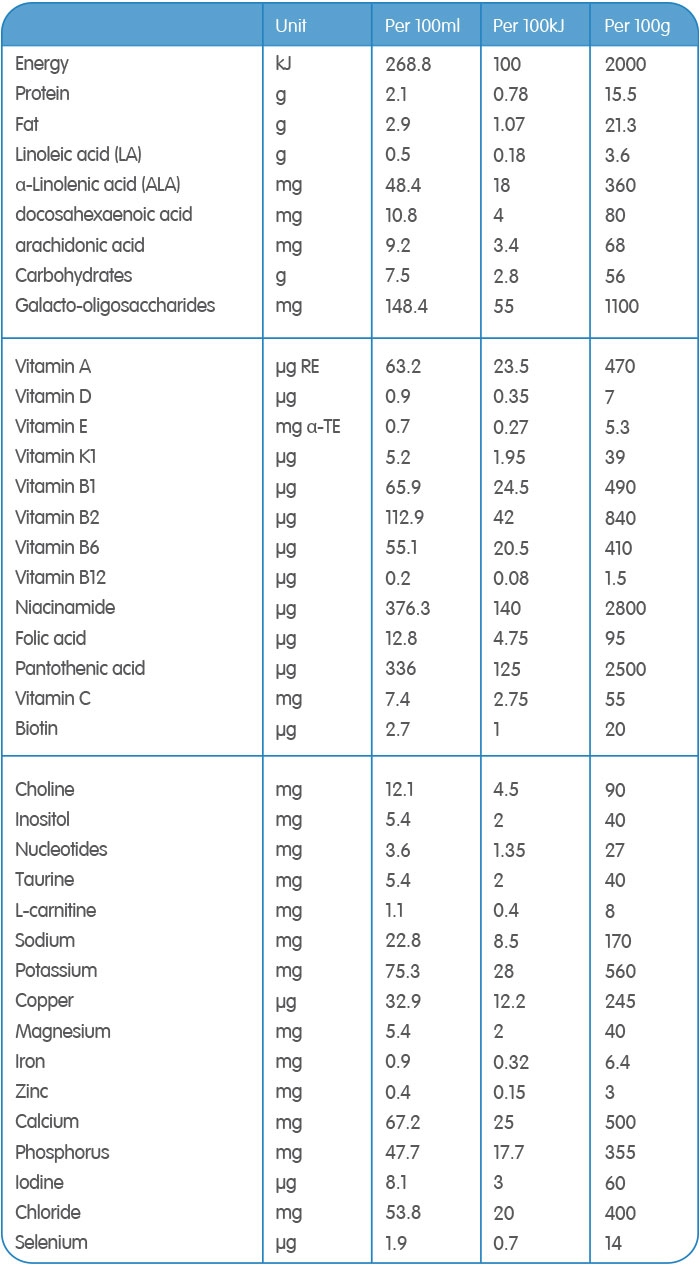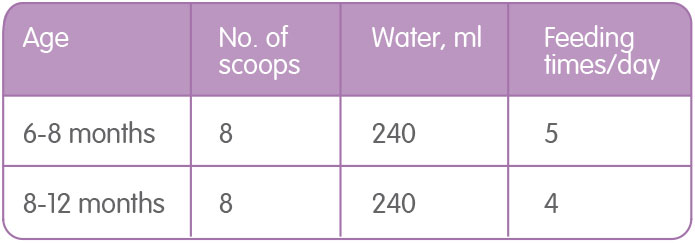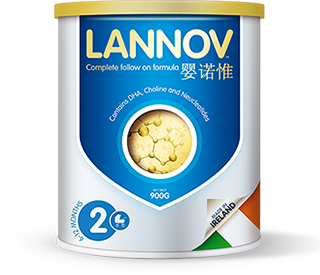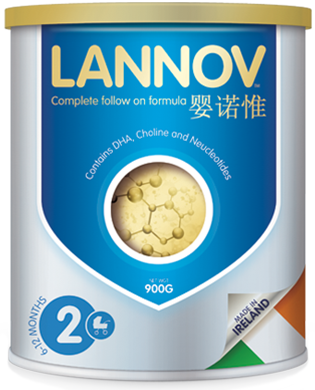Your unstoppable baby
From around six months old, babies need solid food
in addition to breastmilk or formula for adequate
nutrients and energy. Introducing solid food at this
age is also important to help children develop skills
required for eating such as chewing, and for
speech later in life.
That is why our cows only eat grass for breakfast
lunch and dinner just as nature intended. The milk
from our grass fed cows is brimming with vitamins
and has naturally up to 5 times more
Conjugated Linoleic Acid (CLA) and high levels of
omega 3 fatty acids and Beta carotene than milk from grain fed cows.
Healthy cows roam free
The cows that supply the milk for Lannov roam free on
pasture for 300 days per year, the way nature intended
- for the other 65 they are snuggled up inside for
protection from the coldest days of winter but our
dedicated farmers continue feed them grass. They are
milked twice per day and the milk is GMO (genetically
modified organism) free and growth Hormone free.
Fresh milk everyday
Located in the beautiful south west of Ireland, the
cows that make the milk for our formula are all located
within 200km of where our formula is made. This means
that the milk is picked up daily ensuring freshness
and premium quality.
Stage 2
Nutritional Information
Average Quantity per 100ml of prepared formula

Stage 2 Ingredients
Demineralised whey powder, Vegetable oil (soybean oil,
palm oil, palm kernel oil, sunflower oil), Skim milk
powder, Lactose, Whole milk powder, Whey protein
concentrate, Minerals (potassium chloride, calcium
hydrogen phosphate, calcium carbonate, sodium
citrate, potassium dihydrogen phosphate, copper
sulphate, potassium iodide, potassium citrate, sodium
selenite, magnesium sulphate, ferric pyrophosphate,
zinc sulphate), potassium caseinate, Mono-di-glycerides
of fatty acids, DHA (from fish oil), ARA, GOS, vitamin A
acetate, cholecalciferol, dl-α-tocopherol acetate,
phytonadione, thiamine hydrochloride, riboflavin,
pyridoxine hydrochloride, sodium L ascorbate,
calcium D-pantothenate, D-biotin, folic acid,
niacinamide, cyanocobalamin, choline bitartrate, inositol,
taurine, Phospholipids (from soya lecithin), Nucleotides
(Adenosine 5' Monophosphate acid, cytidine
5' monophosphate disodium, Uridine 5' monophosphate
disodium, Inosine 5' monophosphate disodium,
guanosine 5' monophosphate disodium), L-carnitine.
Preparation Guide
Feeding Instructions
6-12 months
Knowing how much to feed your baby can be difficult
to gauge, especially in the early stages. A guide to the
quantity and frequency of feeds is shown in our baby
feeding chart. Generally, from the age of 2 weeks to
6 months you can expect your bottle-feeding routine
to consist of around 5 to 7 feeds a day.
Every baby is different and their appetites vary
widely. The table below provides a general guide
to how often and how much you should feed
your baby, relative to their age.
Your baby's feeding habits may not match these
guidelines precisely, and rarely will they wake exactly
three hours after the previous feed is finished. As long
as they are feeding well and gaining weight normally,
they are probably getting the amount they need.
If your baby is premature or of a low birth weight, their
feeding requirements will be different. Your health professional will
be able to advise you about your baby's unique needs.
Your baby may need more or less than the amounts
shown in the table below - this is simply a guide.
Never leave your baby alone during feeding.

Important: To ensure your baby's milk is mixed to the
right proportions, always use the scoop provided.














